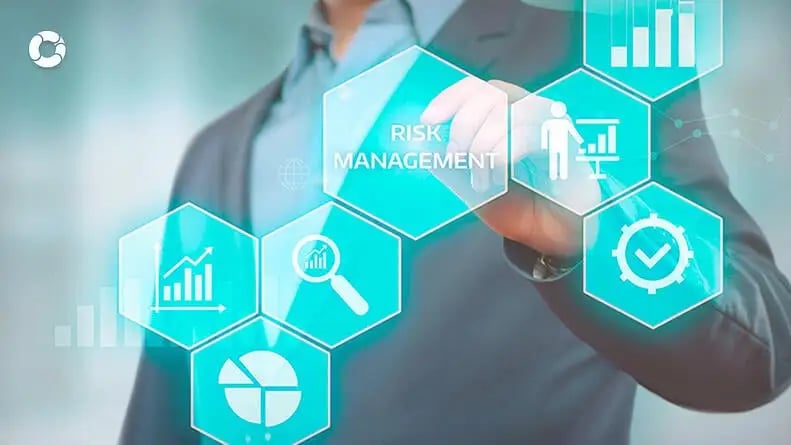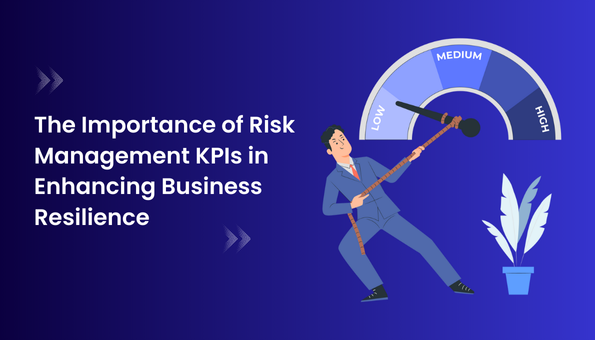Why the Importance of Risk Management Cannot Be Ignored in The Current Economy
Why the Importance of Risk Management Cannot Be Ignored in The Current Economy
Blog Article
Checking out the Value of Risk Management for Effective Decision-Making Methods
In the intricate globe of company, Risk Management arises as a vital element in the decision-making process. The capacity to recognize prospective risks and possibilities, and plan as necessary, can mean the difference in between success and failing.
Recognizing the Concept of Risk Management
Risk Management, a critical part in decision-making, is usually misunderstood or oversimplified. Risk Management entails self-displined and organized techniques, using information and informative evaluations. From economic unpredictabilities, legal liabilities, tactical Management mistakes, to mishaps and all-natural calamities, it addresses various dangers - importance of risk management.
The Role of Risk Management in Decision-Making Processes
In the realm of strategic planning and business operations, Risk Management plays an indispensable duty in decision-making processes. Risk Management hence becomes an essential device in decision-making, aiding leaders to make educated options based on an extensive understanding of the risks entailed. Risk Management serves as a vital component in the decision-making processes of any company.

Exactly How Risk Management Improves Strategic Preparation
In the context of critical preparation, Risk Management plays a critical function. Starting with the recognition of prospective threats, it additionally encompasses the application of Risk mitigation procedures. The role of Risk Management is dynamic but not static, as it demands constant surveillance and adjusting of strategies.
Recognizing Potential Dangers

Carrying Out Risk Reduction
Having established the value of recognizing potential threats, the following step is to check out Risk mitigation. This procedure includes creating and applying techniques to manage identified threats properly. It is a crucial facet of tactical preparation as it improves decision-making by minimizing prospective unfavorable results. Risk reduction approaches can range from Risk evasion, Risk transfer, to run the risk of reduction. Each method needs to be customized to the specific Risk, considering its possible impact and the company's Risk tolerance. Efficient Risk reduction requires a deep understanding of the Risk landscape and the possible influence of each Risk. This understanding enables organizations to focus on threats and designate sources efficiently, making certain that the most considerable threats are attended to first.
Tracking and Changing Methods
Though Risk mitigation is a critical action in critical preparation, continuous monitoring and adjustment of these strategies is equally essential. This continuous procedure permits companies to recognize new dangers and reassess existing ones, guaranteeing the implemented methods remain efficient in the ever-changing business atmosphere. It additionally supplies a possibility to examine the success of the Risk Management steps, allowing adjustments to be made where necessary, additional improving tactical planning. Efficient monitoring and change require the usage of analytics and essential efficiency signs (KPIs) to measure effectiveness. These devices give beneficial data-driven understandings that can notify strategic decision-making. Tracking and have a peek at this website adjusting Risk Management approaches is a crucial element for improving an organization's durability and strategic preparation.
Situation Researches: Effective Risk Management and Decision-Making
In the world of business and money, successful Risk Management and decision-making typically serve as the columns of flourishing ventures. These instances highlight the worth of astute Risk Management in decision-making processes. These cases underscore the crucial duty of Risk Management in strategic decision-making.
Tools and Methods for Efficient Risk Management
Navigating the intricate puzzle of Risk Management requires the appropriate collection of tools and strategies. These devices, such as Risk signs up and warmth maps, help in recognizing and analyzing prospective threats. Strategies consist of both measurable techniques, like sensitivity evaluation, and qualitative methods, such as SWOT analysis. These assistance in prioritizing threats based upon their potential effect and chance. Risk feedback strategies, a vital element of Risk Management, involve accepting, preventing, transferring, or mitigating dangers. Surveillance and controlling dangers, with read this article routine audits and testimonials, make sure that the techniques continue to be efficient. With these devices and techniques, decision-makers can browse the facility landscape of Risk Management, consequently helping with educated and effective decision-making.
Future Patterns in Risk Management and Decision-Making Techniques
As we check out the huge landscape of Risk Management, it ends up being evident that the devices and strategies used today will certainly remain to evolve. Future patterns aim in the direction of an increased reliance on modern technology, with expert system and equipment learning playing substantial duties. These technologies will enable organizations to forecast potential threats with greater accuracy and make even more educated choices. Furthermore, there will certainly be an expanding focus on durability, not simply in managing threats but also in getting better from adverse situations. Lastly, the principle of Risk society, where every member of an organization realizes and associated with Risk Management, will get more prominence. These trends advertise a more positive and inclusive strategy towards Risk Management and decision-making.
Conclusion

Risk Management thus comes to be an important device in decision-making, assisting leaders to make informed choices based on a detailed understanding of the risks entailed. Risk mitigation techniques can vary from Risk evasion, Risk transfer, to take the chance of decrease (importance of risk management). Reliable Risk reduction needs a deep understanding of the Risk landscape and the prospective influence of each Risk. Risk action techniques, a vital component of Risk Management, entail approving, staying clear of, moving, or mitigating risks. The principle over at this website of Risk culture, where every member of an organization is conscious and entailed in Risk Management, will acquire a lot more prominence
Report this page